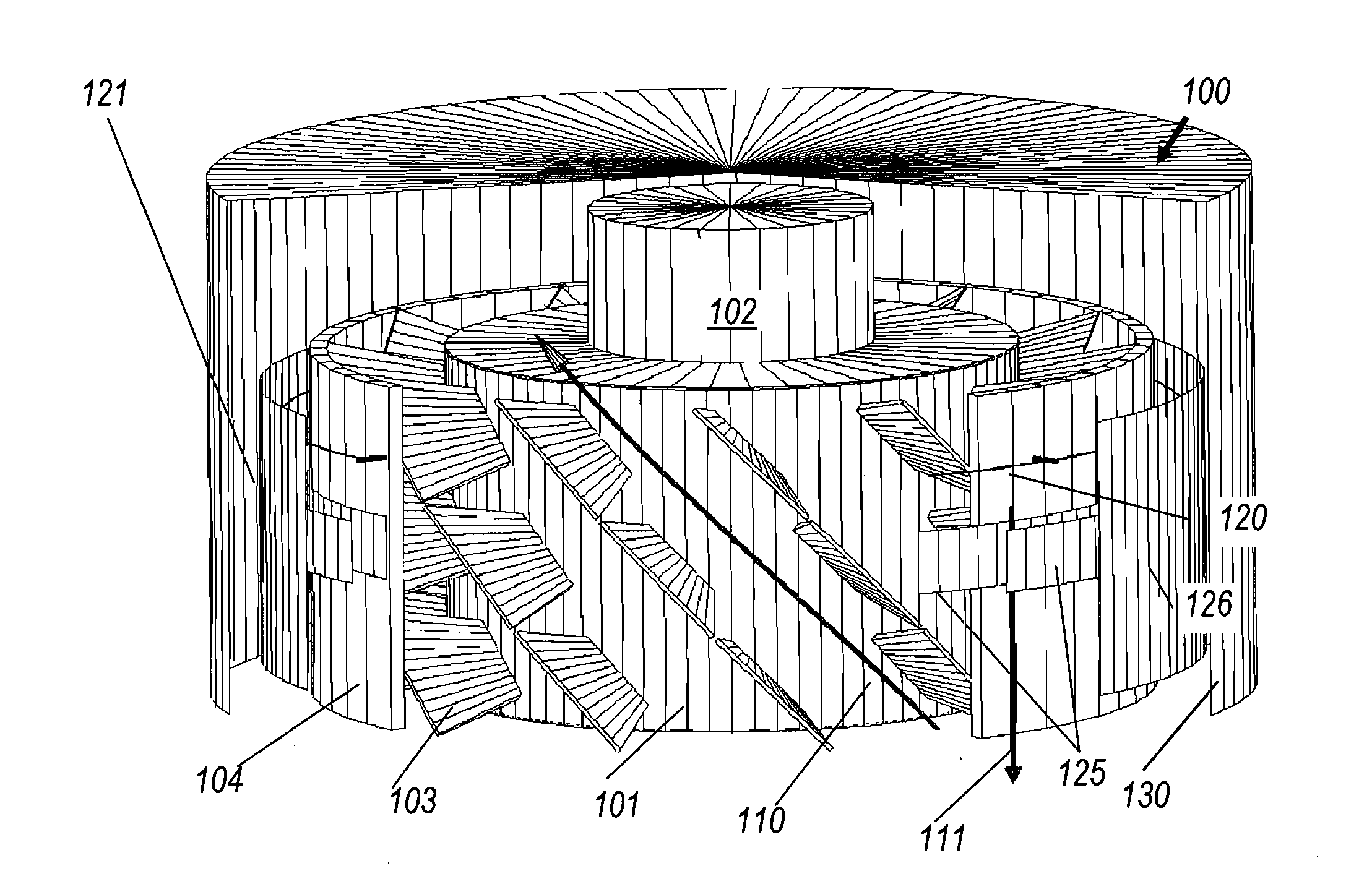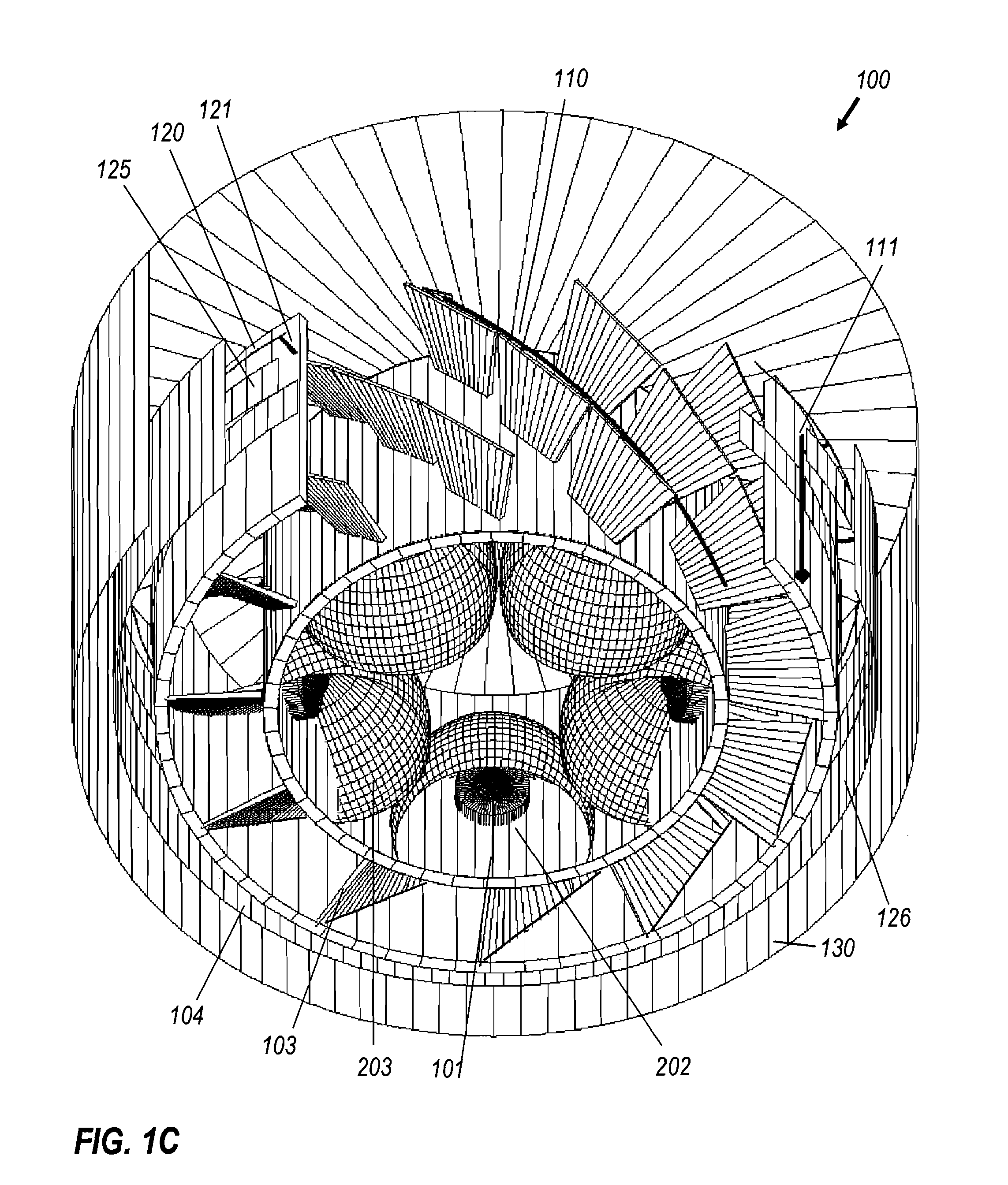Heat sink with helical fins and electrostatic augmentation
a technology of electrostatic augmentation and heat sink, which is applied in the direction of lighting and heating apparatus, semiconductor/solid-state device details, fixed installation, etc., can solve the problems of inconvenient shape of air passage, no moving parts, and short improvement time, and achieve excellent air flow
- Summary
- Abstract
- Description
- Claims
- Application Information
AI Technical Summary
Benefits of technology
Problems solved by technology
Method used
Image
Examples
Embodiment Construction
[0022]A better understanding of various features and advantages of the present invention will be obtained by reference to the following detailed description and accompanying drawings, which set forth illustrative embodiments in which certain of the principles of the invention are utilized.
[0023]FIG. 1A (which together with FIG. 1B and FIG. 1C may be collectively referred to as FIG. 1) shows a perspective cutaway view from above of LED downlight 100, comprising an inner sleeve that constitutes the wall of a central optical can 101. LEDs 202 and reflectors 203 (see FIG. 1C) are mounted to the inside walls of optical can 101. Downlight 100 further comprises power supply 102, vanes or fins 103, outer sleeve 104, and an outermost sleeve or shroud 126 outside outer sleeve 104, and is positioned within ceiling can 130. As shown in FIG. 1, there are three tiers of vanes 103. The individual vanes are tilted relative to the axial and circumferential directions of the can 101 and sleeves 104, ...
PUM
 Login to View More
Login to View More Abstract
Description
Claims
Application Information
 Login to View More
Login to View More - R&D
- Intellectual Property
- Life Sciences
- Materials
- Tech Scout
- Unparalleled Data Quality
- Higher Quality Content
- 60% Fewer Hallucinations
Browse by: Latest US Patents, China's latest patents, Technical Efficacy Thesaurus, Application Domain, Technology Topic, Popular Technical Reports.
© 2025 PatSnap. All rights reserved.Legal|Privacy policy|Modern Slavery Act Transparency Statement|Sitemap|About US| Contact US: help@patsnap.com



